#les célestins
Text

Les couleurs de la ville.
Rue d'Amboise II
#photographie urbaine#urban photography#couleurs urbaines#urban colors#abstraction#figuration#reflet#reflection#minimalisme#minimalism#argentique#analog photography#rollei prego 125#kodak portra 400#rue d'amboise#les célestins#69002#lyon#rhône#auvergne rhône alpes#france#photographers on tumblr#poltredlyon#monlyon#onlylyon#lyonurb#brumpicts#frédéric brumby
37 notes
·
View notes
Text

Célestin Boutin - Les Grands Ballets Canadiens de Montréal
#Célestin Boutin#french ballet dancers#Les Grands Ballets Canadiens de Montréal#danseur#bailarín#ballerino#dancer#tänzer#boys of ballet#ballet men#dance#ballet
579 notes
·
View notes
Text

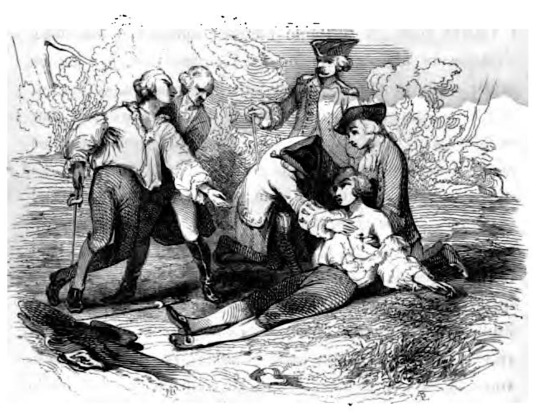

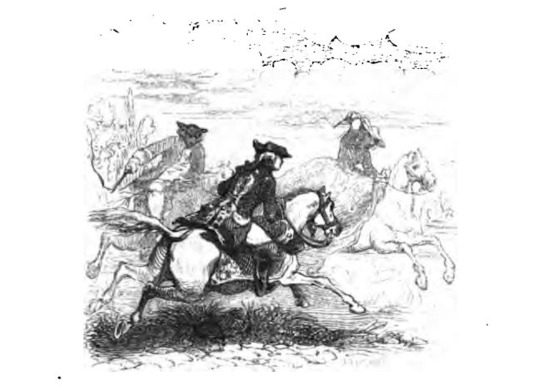
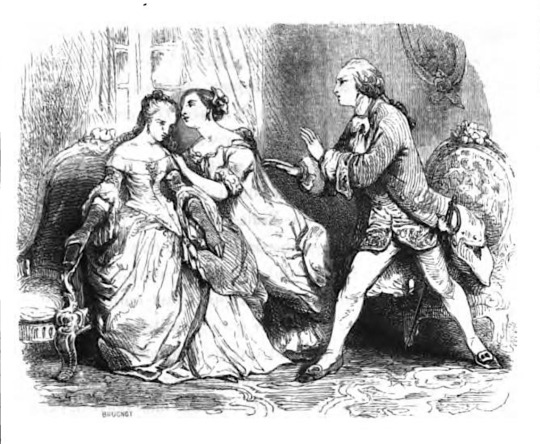
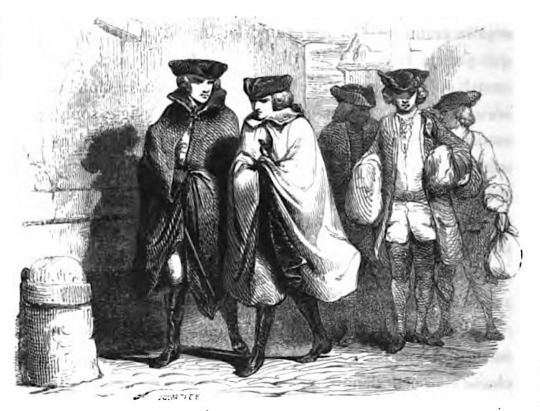

Illustrations from an 1842 edition of Les amours du chevalier de Faublas by Célestin Nanteuil and MM. Baron, Français
Published as Jean-Baptiste Louvet de Couvray, Les aventures du chevalier de Faublas (Paris: J. Mallet et Cie, 1842)
30 notes
·
View notes
Text

Célestin Boutin | Yui Sugawara | Les Grands Ballets Canadiens de Montréal | Artistic Ballet Gala 2022 | Japan
#célestin boutin#celestin boutin#yui sugawara#white tights#ballet slippers#tutu#les grands ballets canadiens#ballerina#les grands ballets canadiens de montréal#ballet office japan#balletphotography
45 notes
·
View notes
Text

Ernest & Celestine: A Trip to Gibberitia (2022, France)
Before the late 2000s and early 2010s in the United States, the possibility of finding mostly hand-drawn animated features from outside the major American studios and select anime works was a remote one if you did not live near a major city. Chipping away at that reality is New York City-based GKIDS, a distributor dedicating itself to introducing independent animation, “for both adult and family audiences.” Without GKIDS, Ireland’s Cartoon Saloon (2009’s The Secret of Kells, 2020’s Wolfwalkers) does not have the international reputation that it now has. GKIDS’ dedication to playing both dubbed and subbed versions of movies (before handing over theatrical distribution rights of Studio Ghibli movies to GKIDS, Walt Disney Studios only offered English dubs for theatrical releases) has shown its respect for its audiences.
When I saw Ernest and Celestine (2012, France/Belgium) in a theater in March 2014, it was the first GKIDS release I saw that was staunchly a children’s movie. What I saw that day was eye-opening. Here, like the animated movies that colored my younger days, was a work that could easily appeal to kids. But had similar, if not equal, appeal to adults. Call me a provincial and ethnocentric American all you will, but I realized then that non-English and non-Japanese-language animation is not always “more sophisticated” than what my friends and I mostly watched. It remains, to me, one of the best animated features of this young century. My thanks to GKIDS for all that they provide to American audiences willing to branch out beyond what is most readily available.
A decade and a CGI animated television series later, a new film based on the duo created by the late author-illustrator Gabrielle Vincent arrives. Based on an original story, Ernest & Celestine: A Trip to Gibberitia (in French: Ernest et Célestine: Le Voyage en Charabïe) retains the spirit of the loving friendship between bear and mouse – both perpetual outsiders. This hand-drawn sequel’s directors are Julien Chheng (animator on the original movie, producer of Primal, and director of “The Spy Dancer” from Star Wars: Visions) and Jean-Christophe Roger (a director on the TV series). There was no involvement from the original movie’s directors – I’m unsure what Stéphane Aubier and Vincent Patar (2009’s A Town Called Panic) are up to; Benjamin Renner is now working at Illumination. With some modifications that resemble more of the television series than the original film, Ernest & Celestine: A Trip to Gibberitia is another comedic delight, with pointed statements to make about the absurdity of government censorship. It does not exactly recapture the aesthetic pleasures nor the succinct writing of the first movie, but it still compares favorably than almost anything released in English-language animation this year.
Ernest and Celestine (Lambert Wilson and Pauline Brunner, both returning to the roles), defying societal expectations and a biased legal system in the first film, are still living together. Celestine draws and paints. Ernest, who has just awoken from hibernation, busks on his Stradibearius violin and bandoneon (it’s not an accordion). One day, Celestine accidentally breaks the neck of Ernest’s violin – Celestine is repentant, Ernest distraught but not angry. The only one who can fix the violin is the original craftsman, Octavius (Jean-Marc Pannetier). He lives in Ernest’s all-bear homeland of Gibberitia (Charabïe*), and Celestine believes that they should travel there immediately. A resistant Ernest opposes the plan, but has no choice to follow Celestine when she takes the violin and sets off to Gibberitia on her own. In the first film, Ernest mentions his estranged relationship with his family was due to the fact that he became a musician rather than go into law. In this sequel, Celestine learns the exact details of that conflict, and Ernest witnesses the changes in his family (his parents and especially his younger sister) and Gibberitian society that have transpired due to his decision.
Without spoiling too much, Gibberitia has outlawed all musical notes except for one (a C, or referring to solfège, “Do”). How are the average Gibberitian bears coping? All you have to do is look at the national slogan: “That’s just how it is.”‡ Meanwhile, a mysterious saxophonist vigilante named EFG (“Mifasol”, again referring to solfège) playing multiple-note music is giving the Gibberitian police a headache.
Screenwriters Guillaume Mautalent and Sébastien Oursel (the French-Irish animated TV series Glactick Football) present an endearing screenplay that captures the platonic love between bear and mouse. This happens in spite of a messy final act, headlined by a head-scratching decision from Ernest to acquiesce to his father’s demands just before the climax (the result of what the directors Chheng and Roger admit were significant changes to the story in order to accommodate a film where music helps to drive the narrative). The friendship that Ernest and Celestine built in the first film has grown in the time between the two films, and it is reassuring to see that they remain so close. One sees it in their reactions when Celestine breaks his violin, Ernest’s attempts to make sure Celestine is safe, her disgust when she hears about his parents’ expectations, and quieter moments where little else is happening. Simple as their friendship may seem, their relationship has deepened over time, through their distinct but complementary personalities and mutually weathered conflicts. Certainly, Ernest can be a bit of a grump and Celestine has an impulsive streak. But the two accept each other for who they are in that moment, and cannot stand the sight of others treating their friend without compassion. There is much for children to learn here and in the previous film, as well as adults.
That ability to tell a story appealing (in different ways) to both younger and older audiences is even apparent in the drama that exists alongside Ernest and Celestine’s relationship. Gibberitia’s decision to outlaw all but one musical note provides the bulk of this sequel’s comedy and dramatic intrigue. Children will get a kick out of the situation's silliness, as even Gibberitia’s songbirds find themselves on the receiving end of the police’s high-pressure hoses. How much laughter can one elicit from playing a piece, with a straight face, that has only one note? More than you think. Adults will quickly notice the surprisingly sharp critique towards government officials looking to censor works of art. Artists are incarcerated without trial for playing anything other than a C. That the reasons behind the decision are hilariously shallow (rather than, to take a real-life scenario, an intent to further marginalize marginalized groups) makes the movie’s messaging that much more effective for all audiences.
Ernest and Celestine’s conversations with the local constabulary are alarmingly fruitless, usually ending with the authority saying something alone the lines of: “because I said so” or the oft-quoted “that’s just how it is.” If Gibberitia’s kritarchy is outlawing all but one note, what else are they up to? Co-directors Chheng and Roger and co-writers Mautalent and Oursel, to ensure the film’s appeal to children, will not say and steadfastly stick to the ban on all but one musical note. In a show of respect to viewers of all ages, they color the film’s protagonists and their allies with both irreverence and a bold refusal to honor the status quo. It befits Ernest and Celestine (the pair and the prior film): two social outcasts who found friendship through art, who stuck together in the face of mutual xenophobia by their fellow bears and mice (a similar allegory that 2016’s Zootopia bungled). When individuals are allowed to be what they want, when musicians can play whichever notes they wish, does that not make our world – humans and sassy talking animals alike – richer and more beautiful?
Where the preceding television series Ernest and Celestine, the Collection was animated with computers, Chheng and Roger decided to return to hand-drawn animation for Ernest & Celestine: A Trip to Gibberitia. Says Roger in his non-native English:
There is a kind of emotion very, very specific to the drawing. It doesn't really work when it's CG. So we wanted to keep that kind of emotion, or very artistic part, as a part of the film itself. So that's why we came back to the animation, and we work in a specific way to give freedom to animators to express the feeling of the character just by their drawing and animation.
What I think Roger is attempting to say here is that, with a hand-drawn film, character expressions lead into the audiences’ emotional intuition better than computer-generated animation. There exists an expectation, implicit or not, that CGI animation should be “more realistic” than anything hand-drawn. This expectation does not exist with hand-drawn animation, and the rawness and immediacy of the craft lends to greater emotional engagement and work from the viewer. Chheng also added in that same interview that he did not want a “heavily rendered” work, and thought it appropriate to give their animators as much artistic freedom as possible while being respectful to the original illustrations by Gabrielle Vincent. The visible brushstrokes and various pencil scribbles call attention to the animators’ handiwork, and are a homage to those original Gabrielle Vincent illustrations.
Chheng and Roger make some changes in style from the first film. The watercolor style remains, but the white voids and intentionally incomplete exterior backgrounds are gone, with more detail packed into the frame for this sequel. Foregrounds, too are more detailed than before. These changes are probably due to the new setting of Gibberitia: a mishmash of Russian, Ukrainian, Moldovan, and Central Asian influences (Roger was particularly influenced by a trip he made through northern Pakistan into China). Gibberitia is eye-popping, a visual delight, and a more captivating animated production design than in the preceding movie.
youtube
Moreso than the preceding movie, the score drives much of the narrative. Vincent Courtois returns to compose another Ernest & Celestine film, and this is a more memorable outing than the first go. Courtois builds his score around two major themes – one that represents Gibberitia and another signifying the Musical Resistance (and a theme that often is heard from EFG’s saxophone). The best integration of both themes comes in “Appel à la resistance” – a zany combination of swinging saxophone and bandoneon. The Gibberitia theme, often heard with bandoneon and winds (and what may be ethnically appropriate strings), reflects the vaguely Eastern European or Central Asian setting of Ernest’s homeland. The chord progressions of the idea resemble Eastern European folk music (“Korobeiniki”, better known as the Tetris theme, perhaps the most popular). The eleven-note Musical Resistance motif (begins at 0:09 in previous link), is integrated throughout the score, slowly revealing itself and becoming more apparent as Ernest and Celestine learn more about the musical freedom fighters banding together to oppose Gibberitia’s nonsensical musical policy.
Courtois composed the score before any writing was complete. This is contrast to what usually happens in any and all filmmaking, where the score is usually one of the last things to complete. From there, Chheng and Roger crafted their film and set the action sequences to the rhythm and contours of Courtois’ music. Music drives the way in more ways than one in Ernest and Celestine: A Trip to Gibberitia, making the film not just a fun watch, but a wonderful listen (and that includes the end credits song “Qu-est-ce qu’on fait de l’amour?”, composed by Courtois and performed by Pomme).
Ernest and Celestine: A Trip to Gibberitia may not as accomplished as the first film, but this is a charming continuation of what came before. A decade separates the two Ernest and Celestine films. One hopes a third will not be so far away, but Chheng and Roger sound content to wait for the right reasons and story to come their way. Now undoubtedly each other’s best friend, Ernest and Celestine stake their claim as the premier odd couple of modern animated cinema. Celestine’s optimistic determination and Ernest’s streetwise know-how, together, help themselves and others. Free of cynicism, they continue to grow with each other, spreading the hallmarks of their unlikely friendship along the way.
My rating: 8/10
^ Based on my personal imdb rating. My interpretation of that ratings system can be found in the “Ratings system” page on my blog. Half-points are always rounded down.
* This review is based on the original French audio with English subtitles. "Charabïe" definitely does not sound like "Gibberitia", but the word is derived from "charabia", which is French for "gibberish". Ultimately, the decision for English title lies with the original studio(s), not non-domestic distributors like GKIDS.
‡ More accurately, the slogan is, "C'est comme ça et pas autrement." More literally, this means: "It's this way and only this way."
Also in this series: Ernest and Celestine (2012, France/Belgium)
#Ernest and Celestine#Ernest and Celestine: A Trip to Gibberitia#Ernest et Célestine: Le Voyage en Charabie#Julien Chheng#Jean-Christophe Roger#Gabrielle Vincent#Guillaume Mautalent#Sébastien Oursel#Lambert Wilson#Pauline Brunner#Vincent Courtois#Pomme#GKIDS#My Movie Odyssey#Youtube
8 notes
·
View notes
Text
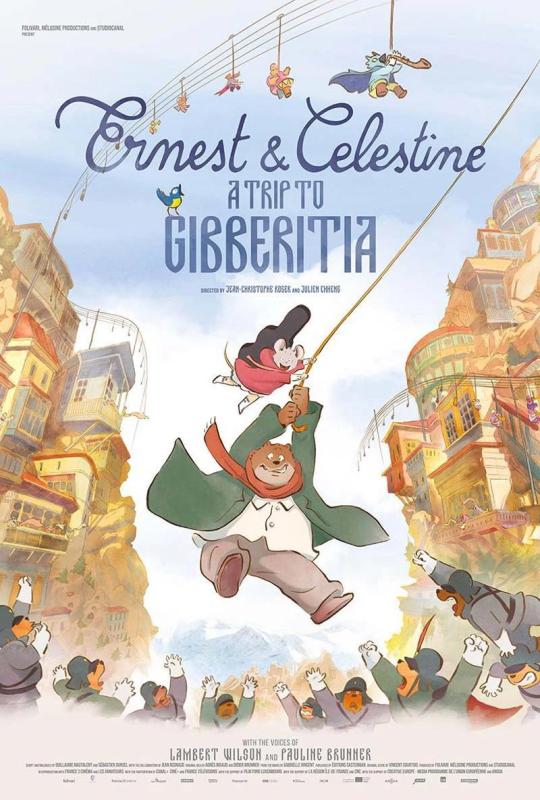

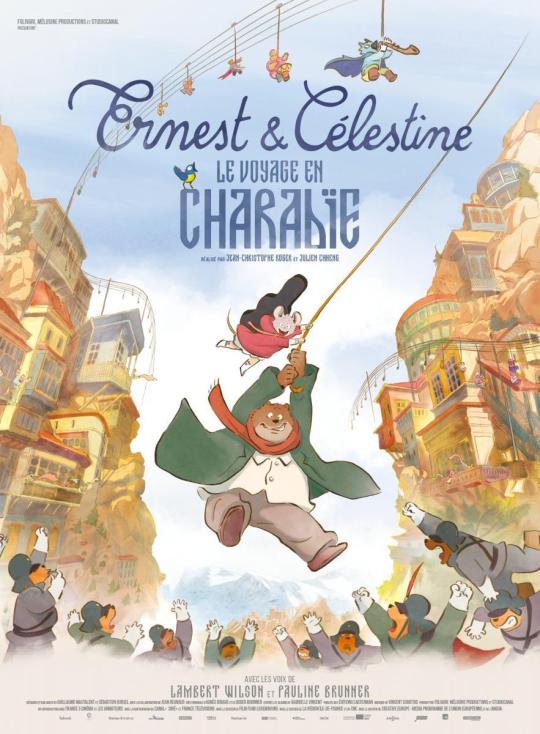
El viaje de Ernest y Célestine (Ernest et Célestine: Le voyage en Charabie, 2022).
#El viaje de Ernest y Célestine#Ernest et Célestine#cine#póster#cartel#cinema#movie#film#filme#cinefilia#cinephile#Ernest et Célestine: Le voyage en Charabie#Ernest and Célestine: A Trip to Gibberitia#Ernest y Célestine#Ernest & Célestine#animación#animation#Jean-Christophe Roger#Julien Chheng#Jean Christophe Roger
5 notes
·
View notes
Text
Romel Bell et Rony Celestin sanctionnés par les Etats-Unis pour corruption
Romel Bell et Rony Celestin sanctionnés par les Etats-Unis pour corruption. #J7dec2022 #Juno7
L’ancien DG de la douane, Romel Bell et et le sénateur Rony Celestin sanctionnés par les Etats-Unis pour corruption.
Le Département d’État des États-Unis a annoncé l’adoption d’un train de mesures pour corruption considérable à l’encontre de Romel Bell, ancien Directeur général de l’Administration générale des douanes et le sénateur Rony Celestin. Le gouvernement américain informe avoir pris…

View On WordPress
#Département d&039;État des États-Unis#Romel Bell#Rony Célestin#sanction#sanctionnée par les États-Unis
0 notes
Text
« Le Bal des Ardents »







Finished a seven pages summary of one of my favorite historic moment in French history « Le Bal des Ardents » ! It is set the 28 January 1389 .
Now some facts I couldn’t put in it !
Charles VI killed four men in a frenzy because he thought they were British soldier send to kill him ! They were in facts, only his close guard. The episode started after a man talked to him in the forest it all took place. He took 8 months to recover from this.
Strangely enough, even though « le Bal des Ardents » was a hugely traumatizing event, it is not the one that granted him his nickname « Le Fol » (the crazy ). It’s only 7 months after his mental health declined again without signs of improvements.
Infos kind of vary there but the event took place in the Hotel Saint-Pol OR the destructed and then reconstructed Hotel de la Reine Blanche.
Louis d’Orléans was 17 when it happened. People did think he did this to kill Charles VI and took the thrones. After the event he build the chapel « Le Couvent des Célestins » to expiate his crimes.
English is not my first languages also , sorry about the mistakes !!
#history#art#comic#digital art#France#france history#historic event#history comics#history comic#It was very long to do#cw: gore#cw body horror#Louis D'orléans#Charles VI#isabeau of bavaria#louis of Orléans#louis of orleans#charles 6#King#French King#france king
21 notes
·
View notes
Text
Holy shit guys I just rewatched one of my childhood movie again Ernest & Celestine, and let me tell you this was even BETTER than I remember (;´༎ຶД༎ຶ`) !!!
The animation, the music, the story, the sharming characters AHHHHHH it's SO GOOD xDDDDD


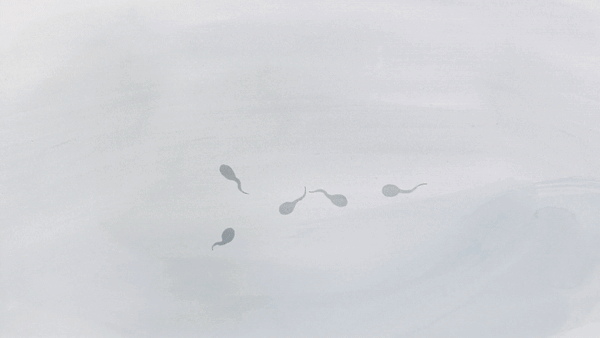

And if my words isn't convincing you, just have a listen to Celestine theme song, it's candy for the ears
Please dear god if you have time to watch just a clip of this movie, take your chance 'cause believe me it will be one of the best piece of media you'll ever encounter in your life !!!!
21 notes
·
View notes
Text
Élisabeth Lebas talking about Robespierre like he’s the Messiah or something compilation
[Edgar Degas] told me that, when he was a child, his mother one day took him to rue de Tournon to visit Madame Lebas, widow of the famous Convention deputy who, on 9 thermidor, killed himself with a pistol. When the visit was over, they withdrew with small steps, accompanied to the door by the old lady, when Madame Degas suddenly stopped, deeply overwhelmed. Letting go of her son's hand, she pointed at the portraits of Robespierre, of Couthon, of Saint-Just, that she had just noticed were hanging on the walls of the antechambre, and she couldn’t keep herself from crying out with horror: ”What! You still keep the faces of these monsters here!”
”Be quiet, Célestine!” Madame Lebas cried out ardently, ”be quiet… They were saints!”
Discours de l’Histoire prononcé à la distribution solennelle des prix du Lycée Jeanson-de-Sailly held by Paul Valéry on July 13 1932, cited in Robespierre ou les contradictions du jacobinisme (1978) by Albert Soboul.
I was able to converse, between 1838 and 1839, with a famous parrot who had been the friend of Robespierre. He belonged to Mme the widow Lebas, the wife of the famous Convention deputy who chose to die with Robespierre, and the mother of M. Lebas, Hellenist scholar, who died a few years ago. Mme widow Lebas, a very respectable woman, whom I had the honour of seeing often in her little house in Fontenay-aux-Roses, where she would make the sign of the cross when she pronounced the name Robespierre, adding these words: Saint Maximilien. As for her parrot, when one said "Robespierre", it replied Hats off! Hats off! It sang the Marseillaise with perfect diction and Ça ira like a Jacobin. It was — and perhaps, thanks to its diet of grain, still is — a sans-culotte parrot, the like of which can no longer be found. Mme Lebas recounted with great emotion how she had managed to save this precious psittacus after Thermidor. It had been seriously compromised. After the arrest of Robespierre and Lebas, in the course of a long domiciliary inspection, every time the name of Robespierre was pronouned the parrot would repeat its refrain, Hats off! Hats off! The government agents had grown impatient and were about to wring its neck, when Mme Lebas, as quick as lightning, grabbed the bird, opened the window and set it free. The poor parrot flew from window to window, until it found a charitable person to open up for it; a few days later Madame Lebas was able to regain possession of this last friend left to her by Robespierre, the only one perhaps, besides his elderly mistress, who has remained faithful to his memory.
L’Union médicale: journal des intérêts scientifiques et pratiques, moraux et professionnels du corps médical (1861) volume 12, page 258-259.
Finally our providence, our good friend Robespierre, spoke to Saint-Just to engage him to let me depart with [him and Lebas], along with my sister-in-law Henriette.
Élisabeth’s memoirs, cited in Le conventionnel Le Bas: d’après des documents inédits et les mémoires de sa veuve (1901), by Stéfane-Pol, page 131.
…If you had been informed of my residence, I would have been eager to tell you the truth. The good that you say of our martyrs is not too charged: they were the true friends of liberty; they lived only for the people, for their fatherland; but some monsters, in one day, destroyed everything; in one day they assassinated liberty. Yes, monsieur, a republican like you would have been happy to know those men, so virtuous on all accounts; they all died poor.
Note written by Élisabeth a few years before her death regarding ”a work treating the revolution” (l’Histoire des Girondins?). Cited in Ibid, page 147.
#élisabeth lebas#élisabeth duplay#robespierre#maximilien robespierre#frev#frev compilation#originally i was just planning to compile all the times babet says he’s virtue boy number 1#then i was like ”…you can actually make a decent compilation only of times she uses religious adjectives to describe him??”
34 notes
·
View notes
Text
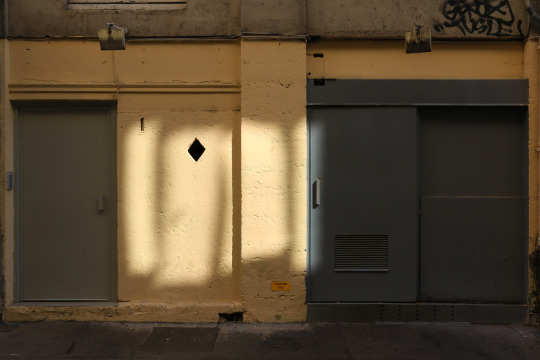
#photographie urbaine#urban photography#reflet#reflection#rue de savoie#les célestins#69002#lyon#rhône#auvergne rhône alpes#france#photographers on tumblr#poltredlyon#monlyon#onlylyon#lyonurb#brumpicts#frédéric brumby
61 notes
·
View notes
Text

Célestin Boutin - Les Grands Ballets Canadiens de Montréal
#Célestin Boutin#Les Grands Ballets Canadiens de Montréal#danseur#ballerino#tänzer#dancer#bailarín#ballet men#boys of ballet#dance#ballet
90 notes
·
View notes
Text
Why does Migration have no post ? It's clearly one of Illumination's best movies. It's an original idea, with the same director as Ernest and Célestine and Le Grand Méchant Renard with clever humor and cynical jokes with tender moments (the family is adorable together and feel genuine in how they love each other even when they are tired of each other ; the main romance is a married couple who are married and you feel how they are loyal and conniving and are not just in love but also friends), and they FINALLY changed artstyle (not counting Mario since the dog still looked like an Illumination dog) with wacky designs especially for the main villain. Illumination is going in the right direction, it should be encouraged !
15 notes
·
View notes
Text
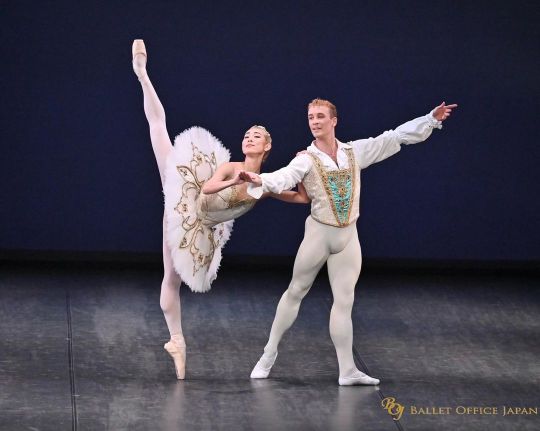
Yui Sugawara | Célestin Boutin | Les Grands Ballets Canadiens de Montréal | Artistic Ballet Gala 2022 | Japan
#yui sugawara#célestin boutin#celestin boutin#white tights#tutu#ballerina#ballet slippers#ballet office japan#les grands ballets canadiens#les grands ballets canadiens de montréal
48 notes
·
View notes
Text
Patron-Minette’s Paris
I thought I would compile a handy reference sheet of all the locations we see the Patron-Minette and their affiliates (both formal and informal) at different points of the novel. The 1832 map that I used can be found at this website— the site was really accessible and has a handy tool that lets you compare this old map directly to a modern-day map of Paris by overlaying.
Anyway, without further ado, here is the map featuring all geographic information relating to the Patron-Minette. Please expand this post to see the corresponding list of location names and find out what happens at each location. At the end of this post, you can also find a “short note” where I dissect and speculate some of the movements during the sections of the novel that centre around La Force specifically.
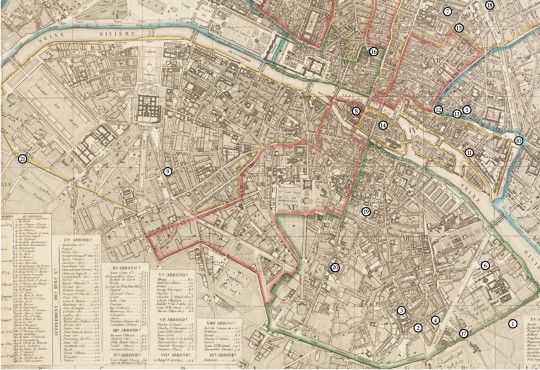
Click for higher quality and ability to zoom in on each numbered point. Sorry that I can’t make the image any clearer!
MEETING POINT
1. The ‘wasteland’ that adjoins La Salpêtrière; The location where the Patron-Minette assemble at nightfall and plan their heists.
•
GORBEAU AMBUSH
2. Gorbeau Hovel [estimated location]; Within this building exists the Thénardier (Jondrette) family lodgings— the location where the Gorbeau ambush takes place.
3. Rue de la Barrière des Gobelins; Here Marius spots Thénardier talking to Panchaud ahead of the Gorbeau ambush on the evening on February 3rd 1832.
4. Rue de Petit-Banquier; Behind a very low wall in the middle of this street Marius spots Brujon and Demi-Liard discussing the Gorbeau ambush, just five hours before it goes ahead.
•
PRISONS
5. La Force; The jail where Babet, Gueulemer, Brujon, Panchaud, Demi-Liard, Boulatruelle, and Thénardier are imprisoned after the failed Gorbeau ambush.
6. La Salpêtrière; A prison and ‘hospital’ where Babet’s mistress is locked up during the Spring of 1832. The location housed both “insane”, “hysterical” women and prostitutes behind its walls.
7. Les Madelonnettes; Formerly a convent, this facility was turned into a prison during the French Revolution. In 1832, Azelma and Éponine Thénardier are locked up here after the failed Gorbeau ambush.
8. La Conciergerie; A courthouse with an adjoining jail. In early April 1832, Babet was transported to this facility from La Force, but he managed to escape from the police en route.
•
RUE PLUMET
9. Rue Plumet [estimated location]; Located in the old Faubourg Saint-Germain district, this is the site where Valjean and Cosette live. It is here that Éponine faces off against the Patron-Minette on 3rd June 1832.
•
INFORMAL AFFILIATES: GAVROCHE, THE MÔMES, AND MAGNON
10. The Bastille Elephant; Gavroche’s ‘house’.
11. Quai des Célestins; The street where Magnon used to live.
12. Rue Clocheperce; After obtaining the two youngest Thénardier boys, Magnon moved to this street as a means of changing her identity. The comedic closeness of Magnon’s two lodgings is certainly not lost on Hugo and he explains as such: ‘In Paris, the identity which binds an individual to himself is broken between one street and another’ (Hapgood translation)
13. Rue des Ballets; On this street corner Gavroche and the mômes encounter Montparnasse the evening before the Patron-Minette’s escape from La Force.
•
CHARACTER SPECIFIC HAUNTS
14. Arche-Marion sewer [estimated location]; Gueulemer‘s hideout.
15. Square du Temple; According to Thénardier, Babet, amongst his other trades, had been an old-clothes broker at the Temple.
16. Barricade between Rue de la Chanvrerie and Rue Mondétour; The location where Le Cabuc/Claquesous shoots a porter and is executed by Enjolras. After being killed, his body is flung over the small barricade on Rue Mondétour.
17. Austerlitz village; It is in this general location where Gavroche witnesses Montparnasse’s attempt to attack Valjean in early April.
18. Gaîté theatre; Brujon and Demi-Liard watch a melodrama at this location on 2nd February 1832, the evening before the Gorbeau ambush.
19. Panthèon; Kruideniers is said to patrol and live in this general area.
20. Val-de-Grâce; Glorieux is said to patrol and live in this general area.
21. Barrière de Grenelle; Barrecarrosse is said to patrol and live in this general area.
•
A short note: Mapping La Force
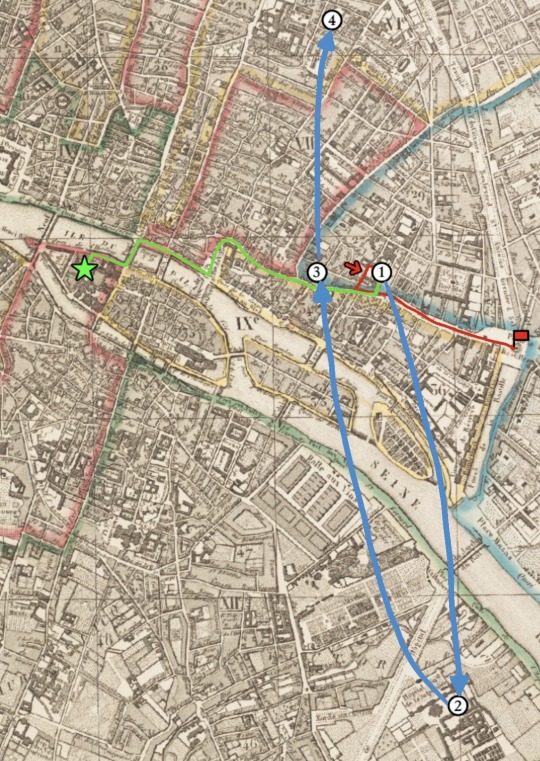
THE ILLOGICAL TRANSFER OF BRUJON’S CORRESPONDENCE ABOUT “RUE P” (blue)
1. La Force prison (Brujon gives note to Babet).
2. La Salpêtriere (Note is delivered to Babet’s mistress).
3. Rue Clocheperce (Note is delivered to Magnon).
4. Les Madelonnettes (Note is given to Éponine by Magnon once she is released).
Frankly, the way that Brujon’s secret correspondence about the Rue Plumet job is handed around before being delivered to Éponine is hilarious. Why did Babet bother to send the note all the way to his mistress in La Selpêtriere when Magnon near enough lives on the doorstep of La Force? Surely there could have been a much easier and more logical way for the note to be delivered to Magnon directly, rather than it crossing over the Seine and going to another prison before being smuggled back out to Magnon again.
And, let’s not forget that the same thing happens in reverse after Éponine has scouted out the house on rue Plumet and delivered a biscuit to Magnon. The whole process seems extremely long-winded and perhaps even riskier than Babet and Brujon trying to get the message delivered to Magnon directly!
•
MONTPARNASSE’S INSANE RUNNING SPEED (red)
Red arrow to red flag: the route taken by Montparnasse to fetch Gavroche and bring him to La Force in order to help Thénardier down from the roof.
Well, by tracking the length of time it takes to complete this route, I have come to the conclusion that Montparnasse has very long legs and is an insanely fast runner.
According to Google Maps taking the quickest route from La Force to the location of the Bastille elephant one way would take over ten minutes to walk. Which sure, maybe that could be run in five minutes if you set a good pace. But, Hugo states that in ‘seven to eight minutes’ Montparnasse had run the complete route twice over (as he had to bring Gavroche back with him to La Force) wearing what I can only image would be rather heavy and uncomfortable garments, considering that his clothes would be soaked with rain at this point of the scene. And, we must account for the time that Montparnasse had to stand outside the Bastille Elephant and call for Gavroche + wait for him to come down and follow him.
It seems like a fairly impressive feat to me that he was able to do all that in seven to eight minutes— I guess he wasn’t referred to as Thénardier’s almost son-in-law in vain then, he certainly seems keen to get the innkeeper down from the roof!
•
HOW DID BABET ESCAPE? (green)
Green star: La Conciergerie, where Babet was being transferred from La Force when he made his escape. The green line is a rough indication of the route he might have been transported along.
Looking at all of the possible routes that Babet could have been transported along whilst being taken from La Force to La Conciergerie has me intrigued. Of course, I can only speculate about which point he might have escaped (if he even escaped en route? Montparnasse is rather vague when telling Gavroche how Babet escaped... but he does mention a police station— so perhaps Babet had fled before his transportation to La Conciergerie had even begun).
I think it is interesting to note that Magnon’s house is located fairly near La Force and La Conciergerie. And, we know that Magnon is at least acquaintances with Babet’s mistress thanks to the route of delivery of Brujon’s “Rue P” note... so perhaps she granted him a place to hide from the police.
Gueulemer’s hideout in the Arche-Marion sewer is also located very close to La Conciergerie. Again, this would have provided a nice hiding spot for Babet after he made his escape— and we know that Victor Hugo loves a good sewer story.
#les miserables#les mis#les mis maps#patron minette#les mis locations#patron-minette#the brick#meta#once again a very niche post I hope you find it interesting though#sidenote I think as a fandom we should talk more about Gueulemer's hideout being in a sewer
62 notes
·
View notes
